Einleitung
Diese Anleitung wurde von iFixit-Mitarbeiter:innen verfasst und ist keine offizielle Reparaturanleitung von Google. Hier erfährst du mehr über unsere Qualitätsstandards.
In dieser Anleitung wird der Austausch der Hauptplatine eines Google Pixel gezeigt. Wenn dein Smartphone insgesamt nicht mehr gut funktioniert und du die Ursache dafür nicht finden kannst, dann hilft möglicherweise der Austausch der Hauptplatine.
Werkzeuge
Ersatzteile
-
-
Schalte das Gerät aus.
-
Erwärme einen iOpener um das Display zu erwärmen und den Kleber darunter aufzuweichen. Ersatzweise kannst du auch ein Heißluftgebläse oder einen Haartrockner verwenden.
-
Die Flächen in der Nähe der beiden Lautsprecher und der Mikrophone (oben und unten) haben größere Klebestellen. Diese Flächen brauchen möglicherweise eine etwas längere Erwärmzeit. Das Display sollte ungefähr zwei Minuten lang erwärmt werden.
-
-
-
Zur Verdeutlichung ist die Rückseite des Displays auf der linken Seite gezeigt. Beachte den schmalen Freiraum zwischen der Seitenkante der Displayeinheit und dem OLED Panel. (Die Einfassungen zeigen diesen Abstand auf der Vorderseite an.)
-
-
-
Ziehe das Display mit einem Saugheber nach oben und erzeuge einen kleinen Spalt zwischen Display und dem Gehäuse des Smartphones.
-
Wenn es sich nicht leicht lösen lässt, musst du mehr Wärme anwenden. Sei nicht ungeduldig, es braucht seine Zeit. Wenn du ganz behutsam ein Werkzeug in den Spalt einsetzen kannst, kannst du zum nächsten Schritt übergehen.
-
-
-
Setze ein Plektrum oder eine Spielkarte in den Spalt zwischen Rahmen und Displayeinheit ein.
-
Schiebe das Plektrum um die Ecke des Displays und trenne so den Kleber auf, mit dem es befestigt ist.
-
-
-
Wenn der Kleber aufgetrennt ist, dann kannst du das Display langsam hochheben und vorsichtig über die Unterkante umklappen, so dass es dann wie gezeigt, mit der Scheibe nach unten, liegt.
-
-
-
Drehe die beiden schwarzen 3,5 mm Torx T5 Schrauben heraus, mit denen Halterung des Displaykabelsteckers befestigt ist.
-
-
-
Entferne die Halteklammer des Verbinders am Displaykabel mit einer Pinzette.
-
Es handelt sich dabei nur um ein kleines Metallstück, es sollte sich leicht ablösen lassen. (Das Kabel wird im nächsten Schritt entfernt.)
-
-
-
Der Mittelrahmen wird von fünf Rasten stark festgehalten. Um diese Rasten zu lösen, musst du wie nachfolgend beschrieben, mit einem Öffnungswerkzeug nach innen drücken.
-
-
-
Zwänge ein Öffnungswerkzeug in die Einkerbung in der unteren rechten Ecke des Smartphones.
-
-
-
Schiebe ein Plektrum auf beiden Seiten des Gerätes in die Fuge zwischen Mittelrahmen und Rückgehäuse, so dass sich die Rasten lösen, mit denen er befestigt ist.
-
-
-
Heble mit einem Spudger den Stecker vom Kabel des Ohrlautsprechers hoch und trenne es von der Hauptplatine ab.
-
Entferne den Mittelrahmen vom Gerät.
-
-
-
Ziehe den Klebestreifen oben am Akku mit einer Pinzette zurück, um den Verbinder darunter freizulegen.
-
-
-
Löse das schmale schwarze Flachbandkabel, welches die Einschalttaste und die Lautstärkeregeler mit der Hauptplatine verbindet, mit einem Spudger ab.
-
-
-
Löse das schwarze und das weiße Koaxialkabel an der oberen rechten und oberen linken Seite der Hauptplatine mit einem Spudger ab.
-
-
-
Halte die Hauptplatine mit einer Pinzette aufrecht und löse das Kabel zum Fingerabdrucksensor mit einem Spudger von der Hauptplatine.
-
Entferne die Hauptplatine vom Gerät.
-
Vergleiche das Ersatzteil mit dem Originalteil. Es kann sein, dass du vor dem Einbau des Ersatzteils fehlende Komponenten übertragen oder Schutzfolien entfernen musst.
Um dein Gerät wieder zusammenzubauen, folge den Schritten dieser Anleitung in umgekehrter Reihenfolge.
Bitte entsorge deinen Elektroschrott fachgerecht.
Hat die Reparatur nicht ganz geklappt? Schau in unserem Forum nach Lösungen.
2 Kommentare
Where do you buy a new motherboard?
Look for a donor phone from used markets, I don't believe the motherboard itself was ever sold individually.
(I'm not 5 years late, you're 5 years early)
Noah -
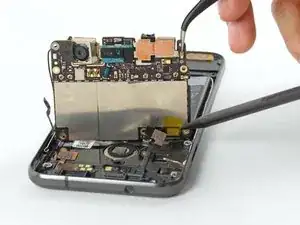
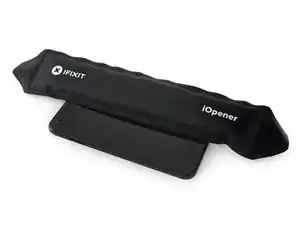
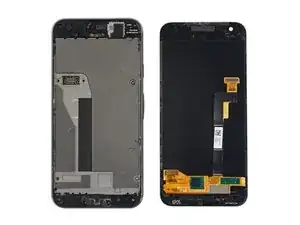
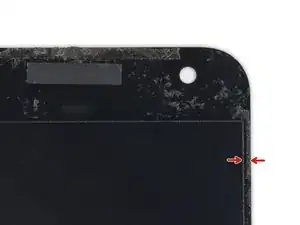

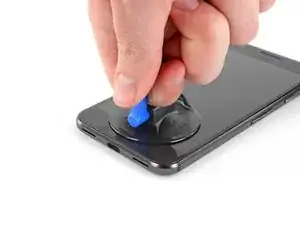
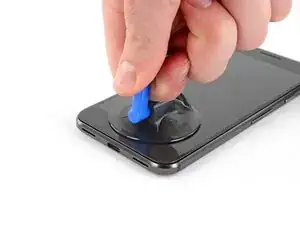
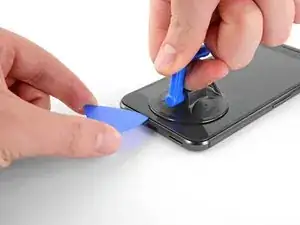
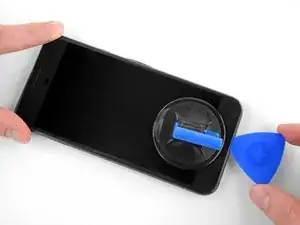
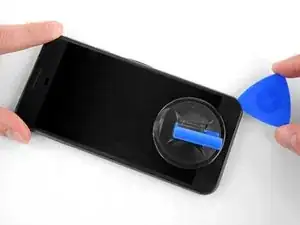
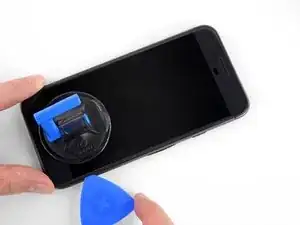
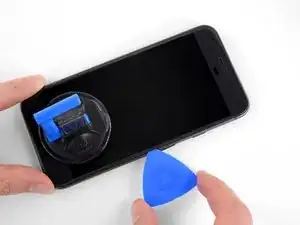
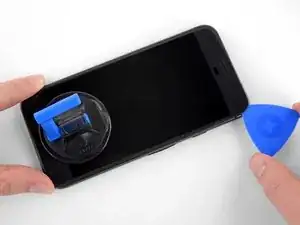
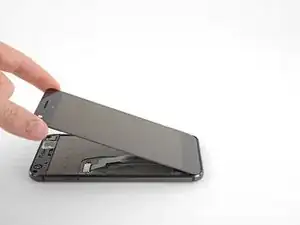
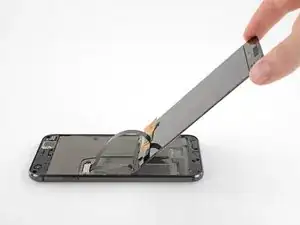
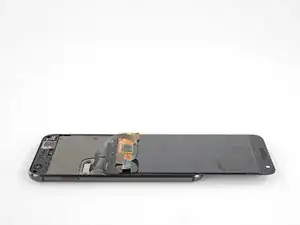
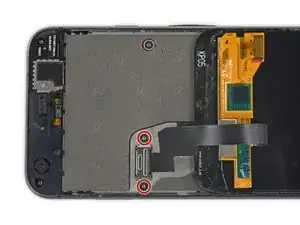
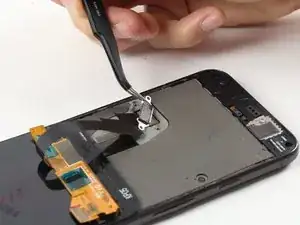
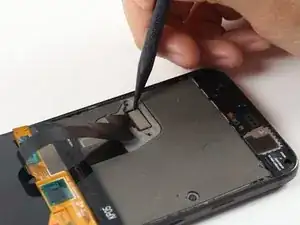
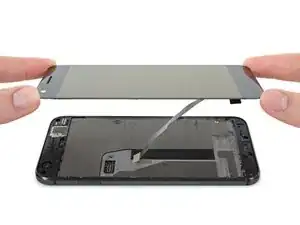
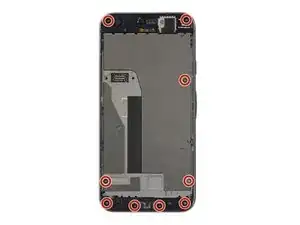
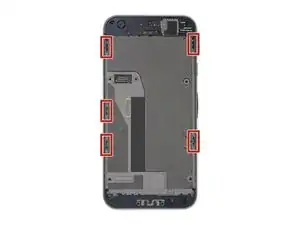
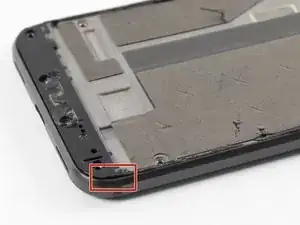
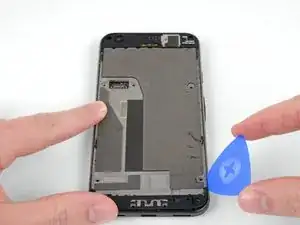
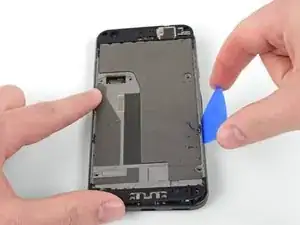
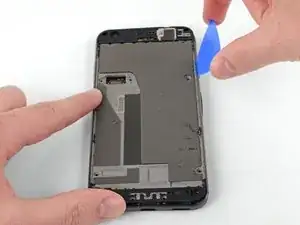
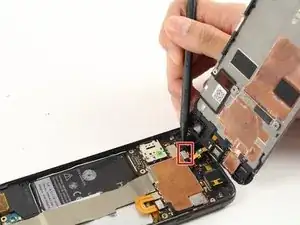
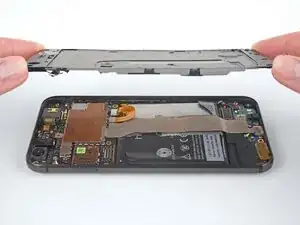
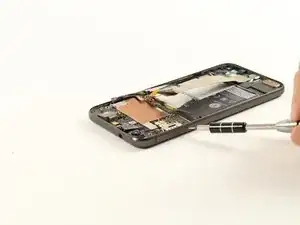
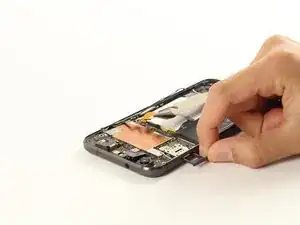
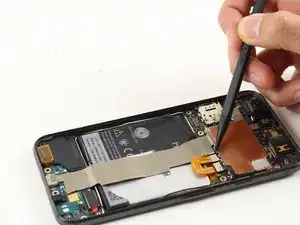
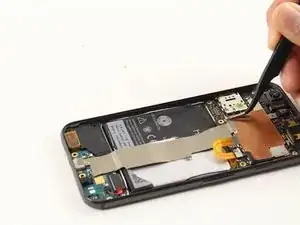
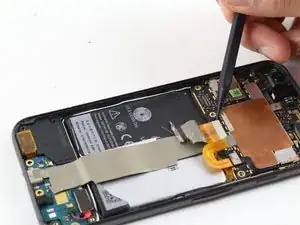
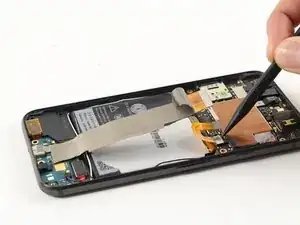
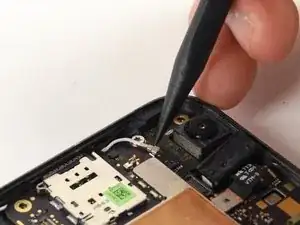
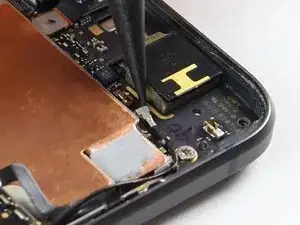

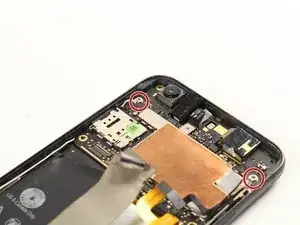
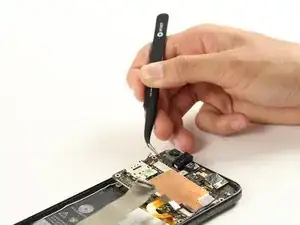
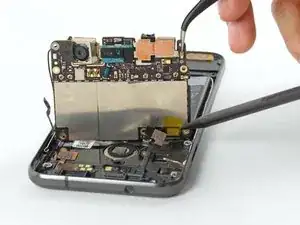
When reassembling, does the adhesive still hold the phone together when closed or do we need to apply more adhesive?
Jess Haddow -
Step 10 addresses this: there should be a plastic sheet that looks like your screen in the repair kit. This is the new adhesive for reassembly.
Peter Karski -
Unfortunately also cracked my display on the way in. You have to go pretty deep under the top and bottom of the screen but BARELY in around the sides, especially the corners. If I had to do it over again, I would have either tried a playing card or put some type of depth limit/mark on my pick so I didn’t go more than a few millimeters in.
Matthew Jastremski -
Use plenty of heat here and take your time. Start from the top, then the sides. use a gentle prying motion with the picks but don’t go too deep.
Richard Wood -
It’s EXTREMELY easy to crack the screen. Just buy a new display module before fixing it. The old screen will be disposable.
Buyi Yu -
Don’t even waste your time with the iOpener. I went straight for the hair dryer and opening picks took 30 mins to get the screen off with no issues.
eric duchene -
Hair dryer worked for me, thanks!
David Gault -
As others have said, the iOpeners didn't work for me at all. I tried microwaving, I tried boiling, but even when the iOpener was too hot to touch the phone didn't get that hot. A hair dryer eventually worked, but took a long time too, and I had to pull quite hard (similar to pulling on a really stuck LEGO brick, I was surprised my screen didn't crack). I also dripped some isopropyl along the edge where I could lift it a teeny bit but not get a pick in, which seemed to get the gap to widen. Once I had an edge up and could start sliding the pick along though everything went much more smoothly. Reading other comments, I bet a heat gun would have been a better tool.
Mark Fickett -
If you haven’t purchased this kit yet then stop right here. The difficulty, as stated, is very difficult. This was my first attempted repair. I spent a good hour heating the adhesive and felt good about getting the display off. I even paused to boot the phone to make sure I didn’t damage the screen before flipping it over - it worked fine still! Then I went to pull the display from the top using the picks. Shattered the corner of the screen. $129 for a new screen. At this point, the Pixel 3 is $499. I bought a new phone. Just be prepared to break the screen. Many people mention it in the comments. I felt confident I could do it. I couldn’t.
Michael Neil -
do yourself a favor and purchase a replacement screen when you order a battery. it’s impossible to remove the screen without damaging it no matter how careful you are.
Andrey Gerasenkov -
100% agree. So glad that I did. My new screen was only £20 from ebay - took ages to arrive as it came from China, but works perfectly.
Daniel Yeo -
I managed it - this was my first repair. It’s a lot harder than I was expecting, but totally doable! I recommend just sliding the very edge of the pick around first until you find a corner that starts to peel up. Once you can see under the screen (without bending it, of course!), you can go further in to break the stubborn adhesive globs. It took me just under 30 minutes to remove the screen.
Peter Karski -
My tip: Place a hot-water bottle on the screen for 2 minutes. Use the suction handle to lift one edge and insert an opening pick. Use an opening tool to cut through the adhesive at the bottom and place another opening pick in the second corner. Place the hot-water bottle on the phone again and wait 2 minutes. Cut through the sides with the opening tool (if you are focused it's nearly impossible to put this tool in too deep) and do the same on the top of the phone as on the bottom. I was afraid of the high difficulty, but it only took me 15 minutes to remove the screen with no problems. Medium difficulty.
Dorian -
I didn’t crack the screen, but somehow the thing wouldn’t power on after. Not sure if it was heat, or if I borked the cable somehow. New screen went in and it works great.
Chris Jones -
It IS possible to get the screen off without breaking it, just take your time. I spent about an hour using the included picks along with the iopener.
That said, the adhesive is a bear to fully remove from the screen without marring it up.
Kixwooder -
I didn’t fully remove the old glue; When I put it back together, I melted the old glue (and some new glue) to seal it all closed again.
David Gault -
Tip, use a gallon ziplock bag with some hot water (maybe 150 degrees). Place the phone on a towel and fold the towel over and shield the part you aren’t working on, then use the bag for ~30s to apply and re-apply heat as needed. I first heated up the entire phone and ended up separating the screen from the glass (thus breaking the screen). The second time I did it, I just heated up one section at a time and I succeeded in removing the screen without breaking it.
Daniel Beardsley -
Couldn’t get it open with anything, including dunking it (wrapped in a ziplock) in freshly boiled water for from 2 to 20 minutes. But then I managed to get it with only minor discolorations along top and bottom edges (which are noticeable when the screen is off or on dark backgrounds).
What did the trick was setting the heat gun to 100°C and heating it really up close for 2 minutes. 60°C didn’t do squat, but 80-90°C would probably work better, without damaging the screen.
With that done, the glass required a little bit of force to lift up, force of gravity on the rest of the phone wasn’t enough.
gelraenua -
I attempted this with an iOpener and gave up as it didn’t seem to heat it enough to lift the edge of the screen.
I remembered I had a heat gun at that point (duh, should’ve been what I started with). I had the gun at 350 initially and moved it around relatively quickly. But, discovered that if I lingered a little it discolored the screen (tested and the screen still works where it’s discolored, but it’s slightly off-color at one corner). I ended up using 200 deg (F) instead and moved more slowly. I put slight pressure on with the suction cup while heating the edges and finally got a corner up. Plopped a pick in there and used another pick to slowly cut along that edge while heating where cutting. I kept a pick plopped in each corner as I went. Once I got most of the screen free I grabbed the edges of the screen to keep upward pressure from the glue and heated any places that were still stuck with the heat gun and cut the last strands with another pick.
TL;DR - The iOpener doesn’t seem sufficient for this job.
Jonathan Stucklen -